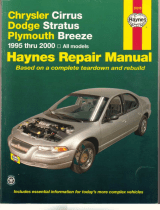
Important Safety Information
The following pages are intended to educate service technicians on the basic maintenance and service actions
for the StairMaster StepMills
®. By following the enclosed instructions and maintenance schedule, you will extend
the life of your equipment and help ensure it will withstand hours of use in your home/facility.
Before working on this equipment, pay attention to the following warnings:
• Read and understand the complete Owner's Manual.
• Keep Owner's Manual for future reference.
• Read and understand all warnings on this machine. If at any time the Warning stickers become loose, unreadable
or dislodged, contact Customer Service for replacement stickers.
• Keep children away from this machine. Monitor them closely when near the machine. Parts that move and
appear dangerous to adults can appear safe to children.
• Consult a physician before you start an exercise program. Stop exercising if you feel pain or tightness in your
chest, become short of breath, or feel faint. Contact your doctor before you use the machine again. Use the
values calculated or measured by the machine's computer for reference purposes only.
• Before each use, examine this machine for loose parts or signs of wear. Do not use if found in this condition. Pay
special attention to the steps. Contact Customer Service for repair information.
• Maximum user weight limit: 350lbs. (159kgs). Do not use if you are over this weight.
• Do not wear loose clothing or jewelry. This machine contains moving parts.
• Set up and operate this machine on a solid, level, horizontal surface.
• Do not step off the machine until the Steps have fully stopped.
• Do not operate this machine outdoors or in moist or wet locations.
• Keep at least 19.7"(0.5m) on each side of the machine clear. This is the recommended safe distance for access
and passage around and emergency dismounts from the machine. Keep third parties out of this space when
machine is in use.
• Do not over exert yourself during exercise. Operate the machine in the manner described in this manual.
• When the machine is put in a studio or club environment, it can only be used in areas where access and control
of the machine is managed by approved staff. The degree of management depends on the user's ability to
recognize and prevent danger to third parties during the exercise movement.
To decrease risk of burns, fire, electric shock, or injury to persons:
• An appliance must not be left unattended when plugged in. Unplug from outlet when not in operation and before
you put on or remove parts.
• Close supervision is necessary when this appliance is used by or near children or disabled persons.
• Use this appliance only for its intended use as described in this manual. Do not use attachments that are not
recommended by the manufacturer.
• Do not operate this appliance if it has a damaged cord or plug, if it is not working correctly, if it has been dropped
or damaged, or fallen into water. Return the appliance to a service center for examination and repair.
• Keep the cord away from heated surfaces.
• Do not drop or put any object into any opening.
• Do not use outdoors.
• To disconnect, turn all controls to the off position, then remove plug from outlet.
Last revised 10/5/15




















